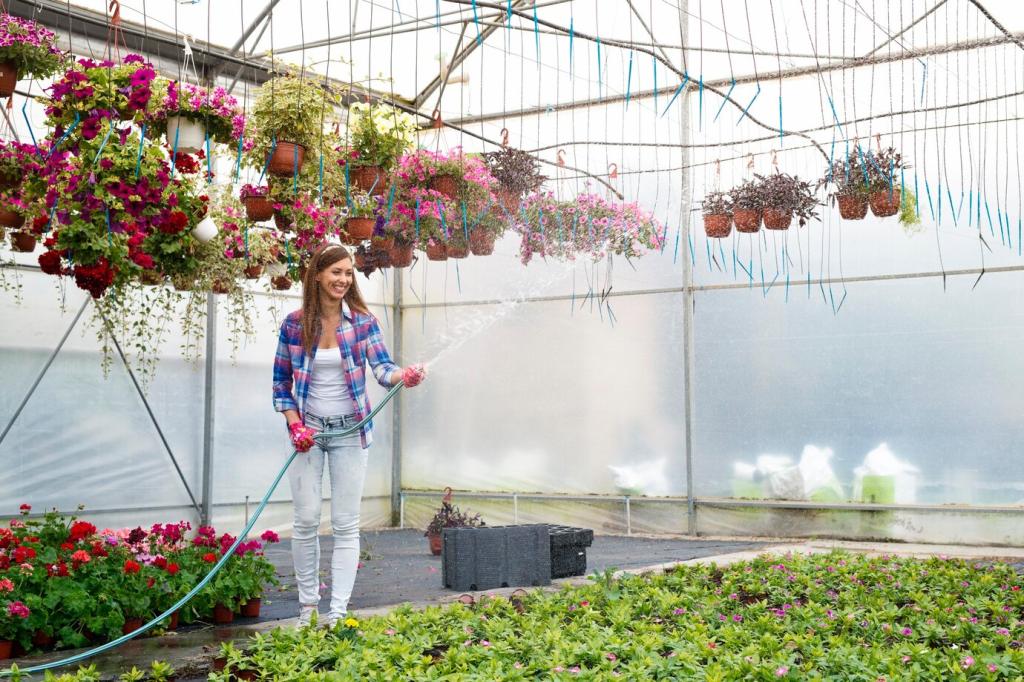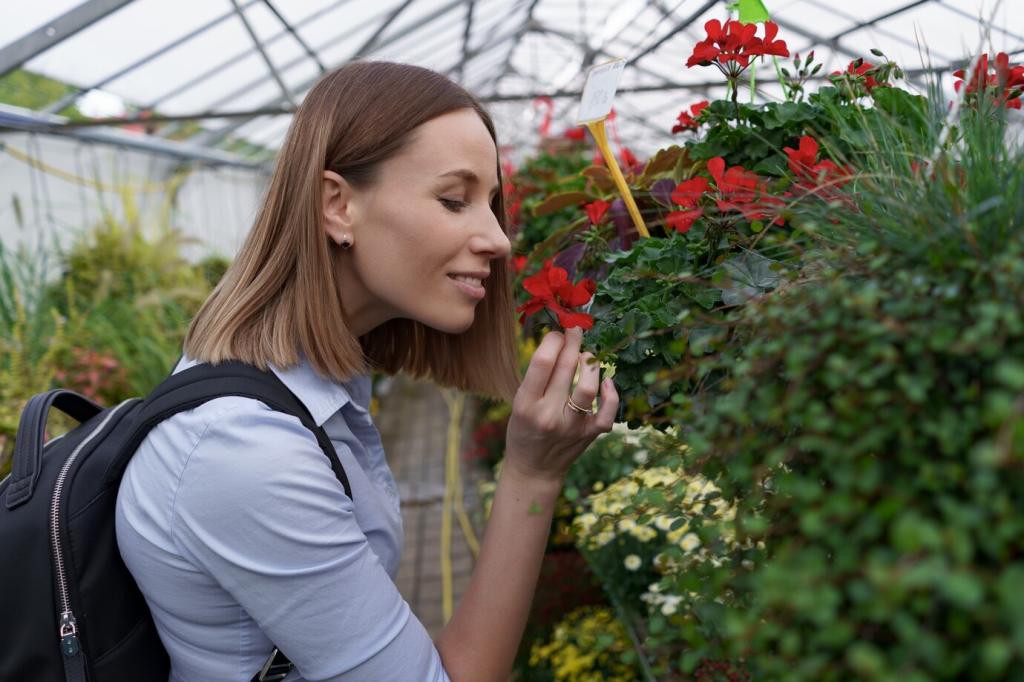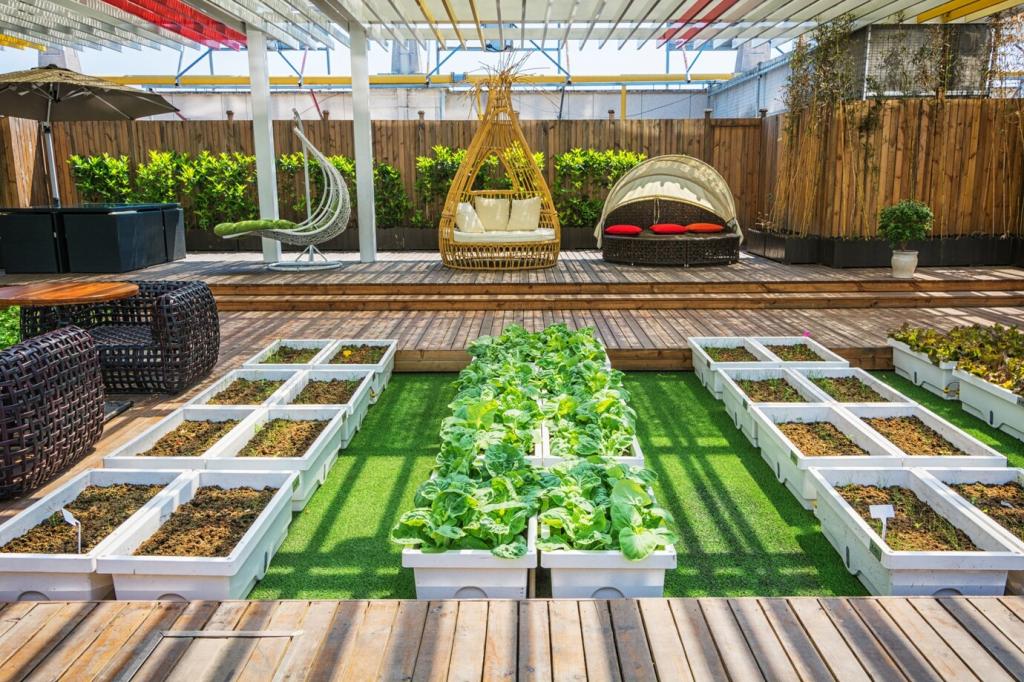
Hydroponics: Maximizing Small Spaces for Urban Gardens
Hydroponics represents a revolutionary approach to urban gardening, offering solutions for city dwellers who have limited space yet yearn for fresh, homegrown produce. By nurturing plants without soil and instead using nutrient-rich water solutions, hydroponics enables urban gardeners to cultivate a variety of crops in compact apartments, balconies, or rooftops—all while maximizing efficiency and sustainability. This method not only brings the joy of gardening to city environments but also supports a healthier, greener lifestyle for modern inhabitants.

Previous slide
Next slide

Compact hydroponic systems, such as desktop or countertop units, are perfect for individuals with minimal room. These systems are designed to fit seamlessly into kitchen nooks, windowsills, or shelves, supporting the growth of herbs, leafy greens, and even small fruiting plants. By using efficient water pumps and integrated lighting, they offer a low-maintenance approach that requires minimal intervention. Their small footprint makes it possible for virtually anyone to grow their own food, even in studios or densely populated city apartments.

Vertical hydroponic gardens take advantage of unused vertical space, stacking multiple plant levels upward rather than outward. This approach is especially suitable for apartment dwellers or those with balconies where floor space is at a premium. Using columns, wall-mounted racks, or tall towers, vertical systems ensure that light and nutrients are distributed evenly to all plants. This allows urban gardeners to multiply their harvests without expanding their footprint, all while creating a visually striking green wall that enhances interior décor and air quality.

Balconies and rooftops provide unique opportunities for slightly larger hydroponic setups tailored to the microclimates of urban buildings. With proper planning and lightweight materials, systems such as troughs or modular platforms can be installed outdoors without overloading the structure. These setups benefit from natural sunlight, although additional shade or wind protection may be necessary. In these spaces, gardeners can experiment with a diverse selection of crops—including tomatoes, peppers, and strawberries—turning underutilized outdoor nooks into lush, productive gardens.
Strategic Crop Selection for Small Spaces
Choosing the right crops is essential when growing hydroponically in small areas. Leafy greens like lettuce, kale, and spinach, as well as herbs such as basil, cilantro, and mint, thrive in constrained environments due to their shallow root systems and compact size. Dwarf varieties of tomatoes, peppers, or strawberries are also suitable for small hydroponic systems. By focusing on plants that offer high nutritional value while taking up minimal space, urban gardeners can make the most of their available area, enjoying freshness and variety throughout the year.
Efficient Use of Light and Water
Urban spaces often suffer from inconsistent natural light, but hydroponic systems can thrive with supplemental lighting, such as LED grow lights, that provide the specific wavelengths plants need. By placing lights strategically, gardeners can mimic sunlight and ensure plants grow evenly. Water is another critical resource; hydroponic systems inherently conserve water, as they allow for recirculation and minimal evaporation. Employing timers and sensors ensures plants receive precisely what they require, reducing both consumption and waste, and making sustainable gardening accessible for city dwellers.
Space-Saving Plant Training Techniques
To amplify yield in a small footprint, plant training techniques such as pruning, trellising, and the use of support cages are invaluable. These methods encourage upward growth or optimize spacing between plants, preventing overcrowding and maximizing light exposure. Techniques like the Kratky method, deep water culture, or nutrient film technique can be adapted for space efficiency, supporting robust plant development in confined quarters. Mastering these strategies enables urban gardeners to produce abundant harvests from even the tiniest balcony or windowsill setup.
